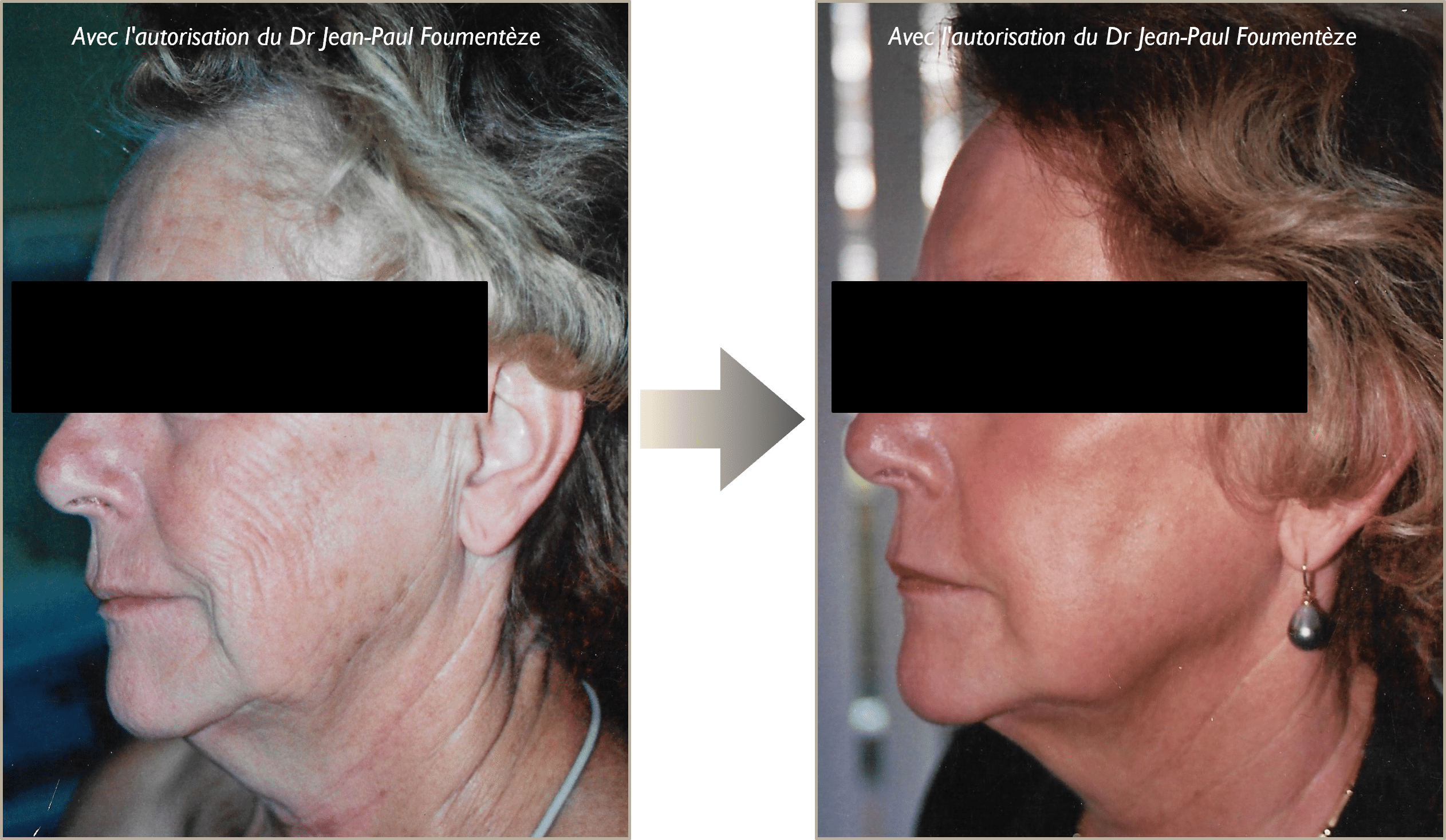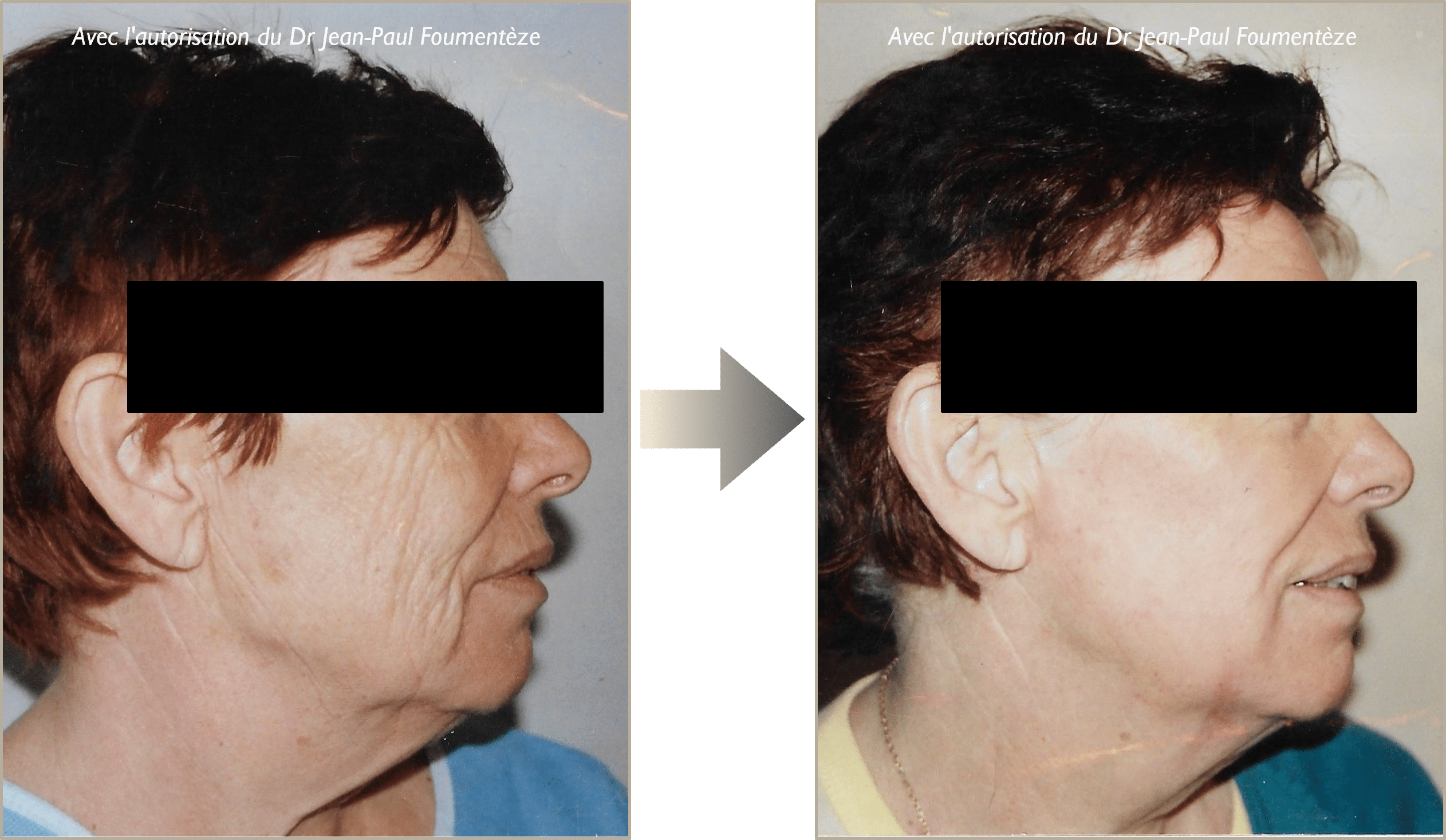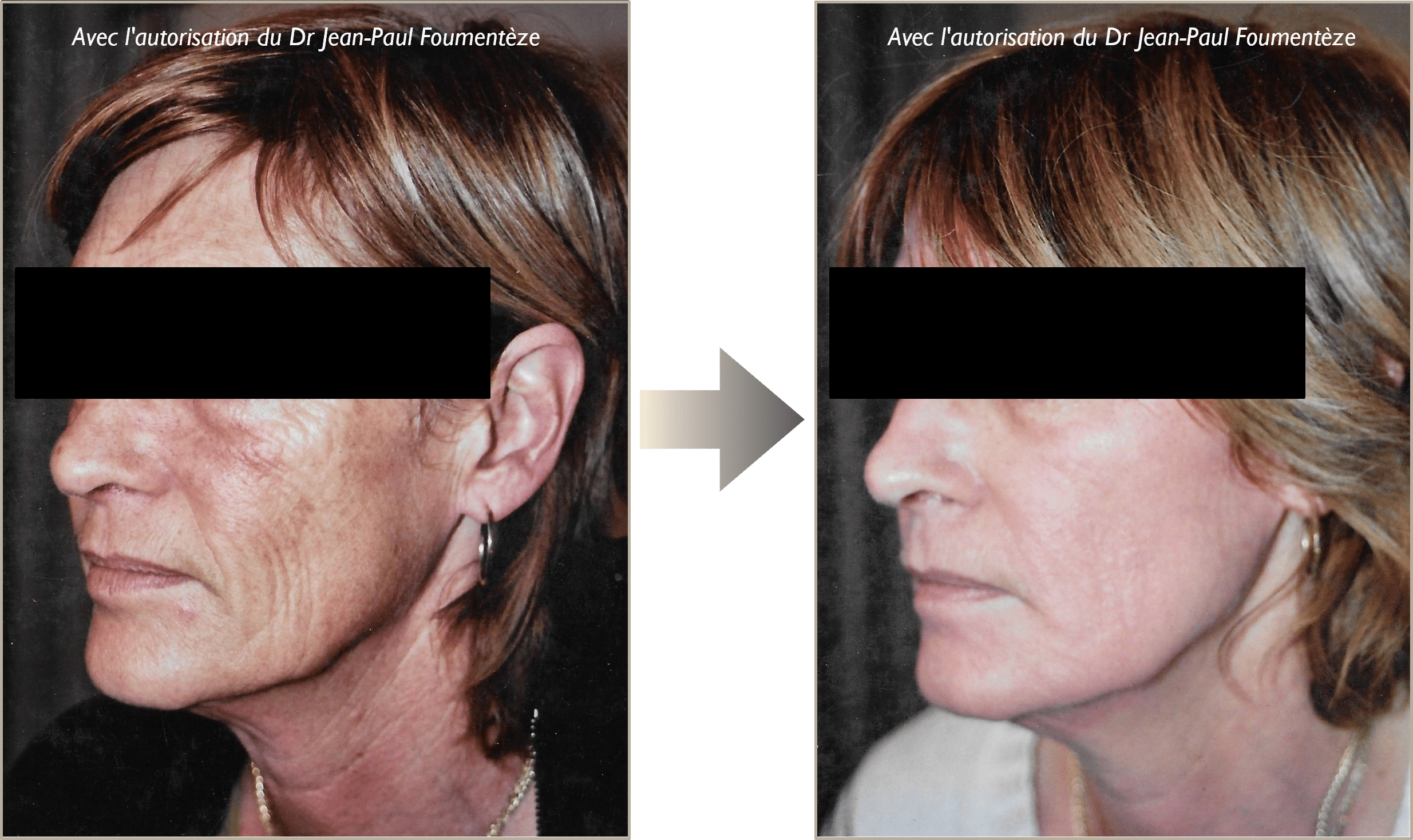The so-called “deep” facial peel, using phenol, is the most effective and longest-lasting procedure in the peel family.
It rejuvenates facial skin by 10 to 15 years..
It is an aesthetic medicine treatment allowing to erase even the deepest wrinkles, acne marks, sun spots and age spots. The phenol deep peel also helps you regain skin elasticity.
I don’t use the same formulation depending on your age, your medical indication and your skin type. There are 5 different formulations, so I can offer you the solution best suited to the area (forehead, cheeks, eyelids, lips) you want to treat, with effectiveness, precision and safety.
What is a Peel?
This peel involves the application of phenol combined with Croton oil.
Application of this solution leads to renewal of the epidermis, superficial dermis and middle dermis.
The skin is completely restored from the pilosebaceous follicles, which contain all the cells needed for this complete reconstruction. Without these follicles, of which there are many on the face, this treatment would be impossible. This is why the face is the only area of the body that can benefit from a phenol peel.
The results of a Deep phenol peel
1) Elimination of all wrinkles and pigmentation spots.
2) Tightening of the skin by synthesis of fibroblast cells, creating a significant lifting effect (although less important than with permanent threadlift or a surgical facelift).
The fibroblast is the building cell of our skin. It manufactures the two proteins of connective tissue, collagen and elastin, as well as the fundamental substance of the skin: hyaluronic acid.
It is these same fibroblasts that all the new techniques try to stimulate using different types of energy: radiofrequency (RF), ultrasound (HIFU), laser, LED, etc. But none of them can match the effectiveness of a phenol peel.
The benefits of deep peeling
✅
Phenol has been used as a skin antiseptic since 1870 (well before the discovery of antibiotics).
Who is the phenol peel intended for?
A phenol peel genuinely rejuvenates wrinkled, acne-scarred or pigmented skin. This in-depth treatment is a major aesthetic medical procedure, reserved for specially trained practitioners.
Despite the advent of lasers, deep peels remain the gold standard in the treatment of deep wrinkles and pigmentation spots.
☑️ Very wrinkled skin
☑️ Skin affected by acne
☑️ Skin with brown spots or sun spots (pigmentation spots)
The possibility of choosing between 5 different formulations means that we can treat with the same quality of result:
☑️ The extreme thinness of the eyelid, which is the thinnest skin in the body
☑️ The very solid skin of the cheek
☑️ Lips that are often very marked
This technique is particularly indicated for people aged between 35 and 80, with white or light skin..
Thick skin can also be treated to obtain equally satisfactory results.
Darker skin types are potentially a contraindication to deep peeling. Phototypes 5 and 6 are contraindicated as they present a high risk of pigmentary rebound.
How is a deep phenol peel carried out in my practice in Nice?
The preparation before the peel:
This technique of aesthetic medicine is very effective; however, it is still a major treatment for which you must be prepared and for which you must be fully informed.
- A blood check-up should be carried out beforehand to ensure that there is no kidney failure and to guard against the risk of infection in the event of untreated diabetes.
- A cardiac check-up must be carried out beforehand to prevent any risk of rhythm disorders.
- You should start preparing your skin with Kligman’s formula 20 days before the procedure.
- Antibiotics and anti-herpes medication should be started the day before the procedure and continued for 8 days.
The peeling treatment:
You don’t come on an empty stomach.
Deep peeling of the entire face lasts around 1,5 hours and is carried out under local anaesthetic in a dedicated room.
This aesthetic treatment may be painful for the first 6 hours, but never longer. The pain is not excessive as it is controlled by painkillers. But to avoid any anxiety, I always carry out the peel in the morning, so that the pain has completely disappeared by the time night approaches.
At the end of the treatment, we apply Vaseline and Bismuth sub-gallate powder. This yellow powder has three functions: it prevents crusting, protects against infection and accelerates the restoration of the dermis and epidermis.
The day after the operation, there is no longer any pain but a sensation of discomfort with significant oedema which persists for 2 days.
Itching may occur, reflecting the healing process of the skin. This is treated with an antihistamine.
The 1st week after the peel:
The powder can be kept for 7 days.
The powder is then removed by the patient at home on the 8th day by successive applications of Vaseline.
When you remove the powder mask, you will see that:
– The skin is very red: It will remain so for several weeks (make-up can be applied, of course), then turn a deep pink for several months before returning to its normal colour.
– Oedema is common for a few more days.
The following weeks and months:
During the first month, sun exposure is strictly forbidden.
From the 9th day onwards, the patient can go out wearing full-coverage make-up.
From the 15th day, patients can resume all their activities without any restrictions and always with appropriate make-up.
A 50+ tinted sunblock should be carefully applied every 3 hours to the treated areas for one year.
What are the postoperative effects and side-effects?
Here is a round-up of what you need to be prepared for after treatment:
Week 1️⃣
Absolute rest at home, absolutely no going out. Keep well hydrated and follow the instructions given.
Week 2️⃣
Some oedemas are still visible. Your skin is red but can now be disguised with make-up.
Week 3️⃣
Full resumption of all your socio-professional activities 15 days after the treatment.
During 3️⃣ to 6️⃣ months:
Your skin is still red, then gradually lightens towards pink. Make-up can still be applied.
A few rare undesirable effects may very exceptionally occur.
An area of hyperpigmentation may sometimes appear on dark skins (after exposure to the sun): this will gradually fade over time.
Lighter skins may take longer for the post-operative redness to fade. This is a very positive sign of dermal reconstruction.
A breakout of acne may occur from the 3rd month onwards, at which point specific measures will be taken to treat it.
What contraindications should be noted?
Deep peel should not be performed on people suffering from unbalanced diabetes, heart rhythm disorders or kidney failure..
Phototypes 5 and 6 are also contraindicated.



